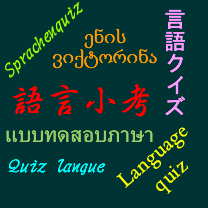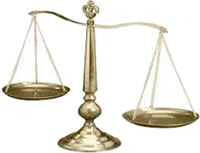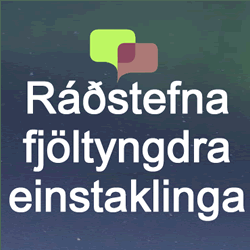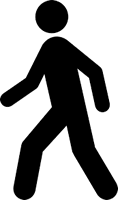
Here’s a recording in a mystery language.
Can you identify the language, and do you know where it was spoken?

Here’s a recording in a mystery language.
Can you identify the language, and do you know where it was spoken?
Yesterday evening I went to Café Lingua – lifandi tungumál at the University of Iceland / Háskóli Íslands. It’s a regular meet-up for language enthusiasts, and last night there were a lot of extra people there who are in Reykjavik for the Polyglot Conference. It was great to see lots of familiar faces, and to meet new people.
I had conversations in English, Welsh, Irish and Mandarin, and spoke odd bits of Italian, Spanish, Portuguese, Cantonese, Swedish, Icelandic, Czech, Russian, Finnish and French. Other languages were available.
Today I’m going on a Golden Circle tour with other Polyglot Conference participants.
I’m off to Reykjavik tomorrow for the Polyglot Conference. This will be my first time in Iceland, and I’m looking forward to it very much.
I’ve been studying Icelandic with Colloquial Icelandic and Memrise for about a month now. I won’t be having complex conversations just yet, but do at least know some basics. I’ve found quite a few Icelandic words that are similar to English, Swedish and/or German, which helps, and the word order is also similar to English.
One of the speakers at the conference, Daniel Tammet, will be telling us how he learnt Icelandic in a week – rather better than I’ve managed. It should be a very interesting talk.
The title of this post means “I am going to Reykjavik tomorrow”, I think.

How many drams are there in an ounce?
If you are familiar with the British Imperial System of measurement, you might know that there are 16 drams (dr) to an ounce (oz), and 16oz to a pound (lb).
There is an even smaller unit, the grain: there are 27.344 grains to a dram, 437.5 to an ounce, and 7,000 to a pound.
I knew about pounds and ounces, but hadn’t come across drams before, except as a Scottish word for a measure of whisky. Grains are also new to me as a unit of measurement.
When talking about weight, particularly people’s weight, using the imperial system, the stone is used, at least in the UK (1 stone = 14 pounds). For example, you might weigh 9 stone 7 (pounds). In the USA you would say 133 pounds, and in metric it would be 60.3kg. So if you want to weigh less, just give your weight in stones and pounds.
The next unit after the stone is hundredweight (cwt). In the UK a (long) hundredweight = 112 pounds, and in the US a (short) hundredweight = 100 pounds. Then there are 20cwt in a ton, so a UK (long) ton 2,240 pounds (160 stone), and a US (short) ton is 2,000 pounds.
The above are known as avoirdupois measurements. To weigh precious metals, troy units are used: 1 pound = 12 ounces. 1 ounce = 20 pennyweight. 1 pennyweight = 24 grains. Slightly simpler, but still more complex than the metric system.
Avoirdupois comes from the Old French avoir + du + pois (good of weight)
Troy comes from Anglo-Norman via the Middle English troye, and is possibly named after Troyes, a town in France where such weights were first used.
Pound comes from the Old English pund (a pound, weight), from the Proto-Germanic *pundą (pound, weight), from the Latin pondō (by weight), the ablative form of pondus (weight), from the Proto-Indo-European *pend-, *spend- (to pull, stretch).
Ounce comes from the Middle French once (ounce, a little bit), from the Latin uncia (1/12 part), from ūnus (one).
Dram comes from the Old French dragme, from the Late Latin dragma, from the Ancient Greek δραχμή (drakhmḗ – unit of weight, a handful), from δράσσομαι (drássomai – I hold, seize).
Source: Wiktionary
Thanks for Ellen Jovin for inspiring this post.

Here’s a recording in a mystery language.
Can you identify the language, and do you know where it’s spoken?

Lists might be considered art, and there was an exhibition of lists made by famous artists some years ago.
In Iceland art is a list – the Icelandic word of art is list. In Old Icelandic it also meant “craft, skill, adroitness, dexterity” [source].
Related words include:
[Source]
Incidently, a list in Icelandic is listi or skrá. Art in Danish and Norwegian is kunst, and it’s konst in Swedish.

One of the Icelandic courses I’m doing on Memrise was made especially for people going to the Polyglot Conference in Reykjavik at the end of October.
Today’s lesson included the phrase “Hefur þú tekið þátt í Ráðstefnu fjöltyngdra einstaklinga?”, which means “Have you been to a Polyglot Conference?”, or literally “Have you taken part in a conference of multilingual individuals?”. Quite a mouthful!
Other Icelandic phrases I’ve learnt from this course, and other courses, are slightly easier to remember and say. For example, “Hvaða tungumál talar þú?” (Which languages do you speak?”).
That’s one that’s easy to ask, but more difficult to answer. The way I answer it depends on the context. At a polyglot event, I’ll go into details about the languages I speak and how well I speak them. Elsewhere I just say something like, “I speak 5 languages fluently, more or less”, or “I speak 11 languages well or fairly well”.
In Icelandic I think I could say “Ég tala fimm tungumál, meira eða minna” (I speak five languages, more or less”) – not sure how to add fluently (fljótt).

An Icelandic word I learnt recently is (að) labba [ˈlapːa], which means ‘to walk slowly, to amble, to stroll’ [source].
Here are a few examples of usage:
Other Icelandic words meaning to walk include:
að ganga [að ˈkauŋka] = to walk, go on foot, to climb; to move, run, go; to go around, be passed on [source].
Here are some examples:
This word comes from the Old Norse ganga (to go, walk), from the Proto-Germanic *ganganą (to go, walk, step), from the Proto-Indo-European *ǵʰengʰ- (to walk, step) [source]. This is also the root of the Old English words gangan (to go, walk, turn out) and gang (a journey; way; passage), which is used in some northern dialects of English to mean to go – e.g. in Geordie gan yem = go home [source]. It’s modern meaning of a group of people probably comes from the idea of people travelling (ganging) together [source].
að troða [að ˈtʰrɔːða] = to trample, tread on, step on; to tread, walk; to stuff, fill, pack; to press forward, elbow one’s way [source].
This word comes from the Old Norse troða (to tread, walk), from the Proto-Germanic *trudaną (to tread, step on), which is also the root of the English words tread and trot.
að rölta [að ˈrœlta] = to stroll, saunter [source].
Incidentally, the English word amble comes from the Old French ambler (to walk as a horse does), from the Old Provençal amblar, from Latin ambulō (I walk) [source], and stroll comes from the German strollen, a variant of the Alemannic German strolchen, from Strolch (vagabond; rascal) [source].

Here’s a recording in a mystery language.
Can you identify the language, and do you know where it’s spoken?
Today we have a guest post from Oliwia Raniewicz
Have you started learning a foreign language by listening to fairy tales or children’s books in that language? Do you remember how intriguing it was to find out what hidden under those strange and foreign words? It probably interested you more than grammar books, even when you were older. Fairy tales are associated with childhood, fun and joyful time. The language of children’s books is simple and understandable, and at the same time it describes the world in a magical way. This is how children may best learn a new language.
Why in this way?
Because learning by having fun is easier and more interesting than doing grammar exercises. We want children to associate learning a foreign with adventure and not just a school task. Knowledge of foreign languages, as we all know, allows children to freely interact with peers from other countries and learn about their culture. Thanks to this, children learn to be open towards others and towards new opportunities.
Language learning should be for children:
Do You Want To Join Us? What Can You Do?
More information about this project.
See also this video:
Address: Fundacja „Anioły Edukacji”, ul. Dąbrowskiego 77A, 60-529 Poznań, Poland